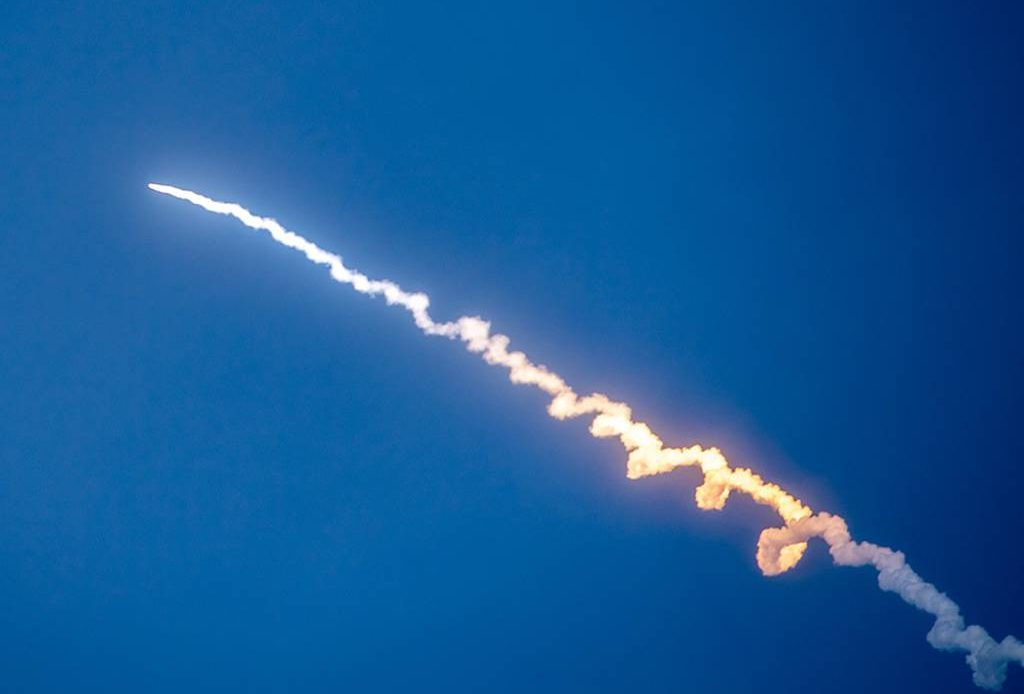
The U.S. Missile Defense Agency has awarded Lockheed Martin a contract worth up to $4.1 billion to continue to field, maintain and upgrade its battle command system, according to an April 11 contract announcement from the Defense Department.
The contract period runs May 1, 2024, through April 30, 2029, with an option to extend it to April 30, 2034.
“This contract will accelerate innovation and continue leading the development of the Command and Control, Battle Management and Communications (C2BMC) system,” Lockheed said in a statement. “Under the new C2BMC-Next scope, the system will be upgraded with the latest 21st Century Security technology for faster, multi-domain coordinated responses to emerging threats.”
Must Read: Lockheed Martin’s New F-35 Sustainment Plan Aims to Boost Readiness
The C2BMC system connects a wide variety of systems and radars that together form a global missile defense architecture that protects the homeland as well as U.S. and allied forces worldwide from long-range missile attacks.
Work under the new C2BMC Next contract includes bringing in allies and partners, according to the company.
“Part of C2BMC-Next will be enhancing global integration, exploring possibilities of linking this decades-long proven, operationally-fielded system with allied nations for the first time,” the American firm’s statement noted.
“With C2BMC’s already well-established lines of reliable communication — operating 24/7, 365 days a year in more than 30 locations across the world — the ability to securely collaborate with other countries, across multiple domains, from any location in near real-time will be a game changer for the defense industry,” according to Erika Marshall, Lockheed’s vice president for C4ISR, which stands for command, control, communications, computers, intelligence, surveillance and reconnaissance.
The effort under the contract will also include providing C2BMC with technology “that will provide greater Space Domain Awareness,” according to the company’s statement. “Through the connection of sensors, and diffusion of data at a level that hasn’t been done before, this enhancement will allow operators to see a complete view of the battlespace around the world.”
Lockheed has been the prime contractor for C2BMC since 2002. The system, first fielded in 2004, has gone through numerous upgrades, which are spiraled in to adapt to threats. C2BMC was designed to focus from a strategic level down to an operational level.
Recent upgrades since 2021 gave the Ground-Based Midcourse Defense, or GMD, system a single, composite, real-time picture of threats by tying into and fusing data from a broader set of sensors to include satellites as well as ground- and ship-based radars, according to the company.
The GMD system is a U.S.-based capability designed to defend the homeland against intercontinental ballistic missile threats, particularly from North Korea and Iran. The system is made up of interceptors buried in the ground at Fort Greely, Alaska, and Vandenberg Space Force Base in California.
MDA also linked C2BMC to the Army’s Integrated Battle Command System, which provides threat pictures down to the tactical level, as part of recent upgrades. IBCS, which reached full-rate production in 2023, is the command-and-control system for the Army’s air and missile defense architecture.
More enhancements included giving C2BMC the capability to pass data back-and-forth with IBCS and other sensors, including space sensors.
The recent upgrades and upcoming development work done under the contract over the next several years will help the system support the Joint All-Domain Command and Control initiative. JADC2 is the Pentagon’s warfighting strategy focused on building an overarching network to fight advanced adversaries like China and Russia. This would require high-bandwidth, resilient communications as well as the ability to share massive amounts of data to help commanders rapidly make decisions.
Lockheed will perform the majority of its work under the new contract in Huntsville, Alabama, and Colorado Springs, Colorado.
Author: Jen Judson
Source: DefenseNews



